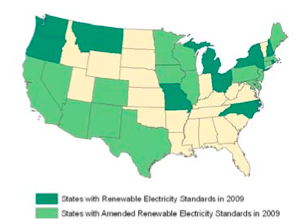As municipal financing for energy improvements (commonly called Property Assessed Clean Energy – PACE) rises in popularity, criticism has also arisen. This short memo responds to the most common concerns with PACE financing. The memo is also provided as a 1-page pdf.
PACE is efficiency
An analysis of PACE that ignores the energy efficiency components misses the most economical investments and the greatest opportunity for home and businesses owners to reduce their energy costs. In particular, financing energy efficiency offers the opportunity to have energy savings that exceed financing costs and that provide the revenue stream for assessment repayment. PACE programs not only include energy efficiency but often require property owners to first improve the building’s efficiency before investing in renewable energy generation, such as solar.
PACE is needed
Almost every property in a city has untapped, economical energy efficiency improvements, with payback times of two years or less. PACE removes upfront cost barriers but most importantly it creates a trusted, 1-stop shop for property owners to get assistance in completing economical energy efficiency and renewable energy investments.
Relaying the PACE assessment is a unique benefit
Without PACE financing, many worthy borrowers cannot access capital to improve the energy performance of their homes and businesses. Since PACE financing is attached to the property, not to the borrower, the energy savings and the costs stay with the property. While the PACE assessment – like any other – is negotiated during the sale of the property, it is the only financing model that allows the property owner to keep the financing costs tied to the energy savings or generation from PACE improvements.
PACE financing is low risk
Cities are already familiar with the mechanism of voluntary special assessment districts (e.g. skyways). The new Minnesota PACE program was designed using practices from the U.S. Department of Energy and White House to protect consumers and minimize risk, including maximum limits on financing per property and bans on funding financially vulnerable properties. In addition, existing PACE programs typically require good payment history on property taxes to access PACE financing. PACE financing is a voluntary assessment.
PACE and lenders work together
Experience in operational PACE programs such as Sonoma County, CA, suggests that mortgage lenders have no trouble with PACE assessments for refinancing or property sales.
Renewable energy is a benefit
On-site renewable energy brings benefits to a property, from reducing carbon emissions to providing peak electricity generation to providing grid stability, not even including the benefits of stable electricity costs and the psychological benefits of being more energy self-reliant. It doesn’t hurt that it creates good jobs.
| How PACE Works |
|---|
| Programs using local government energy financing go by many names, but the most common and generic term is Property Assessed Clean Energy (PACE). The PACE mechanism uses the common notion of special assessments – often used for street repairs, lighting, or sewer improvements – and extends it to on-site renewable energy and energy efficiency improvements to private property. Property-owners can opt in to a voluntary program to receive financing for energy improvements on their property and will pay back the financing through a special assessment on their property taxes. Because PACE represents a new use of an old tool, states frequently have to pass legislation to allow municipalities to enact PACE programs. PACE legislation was signed into law in Minnesota in March 2010. |



